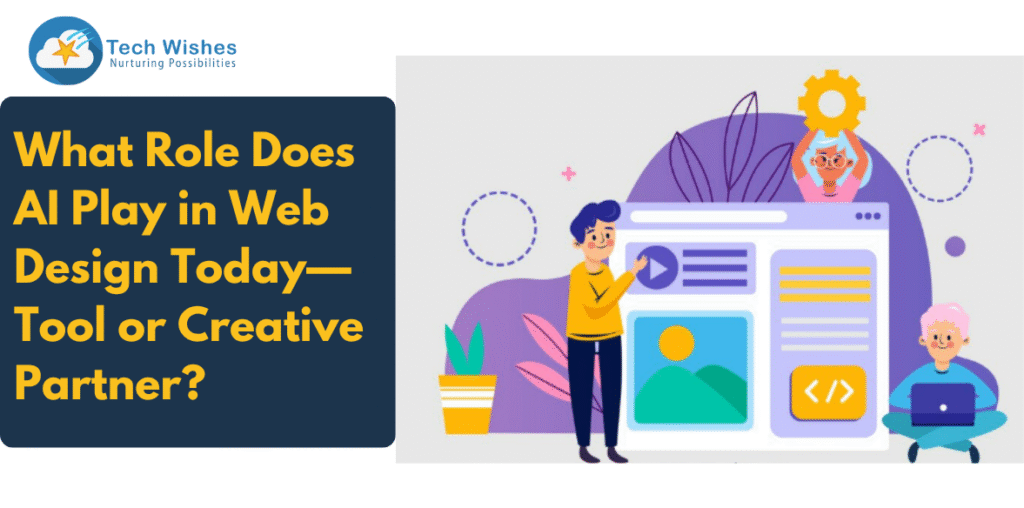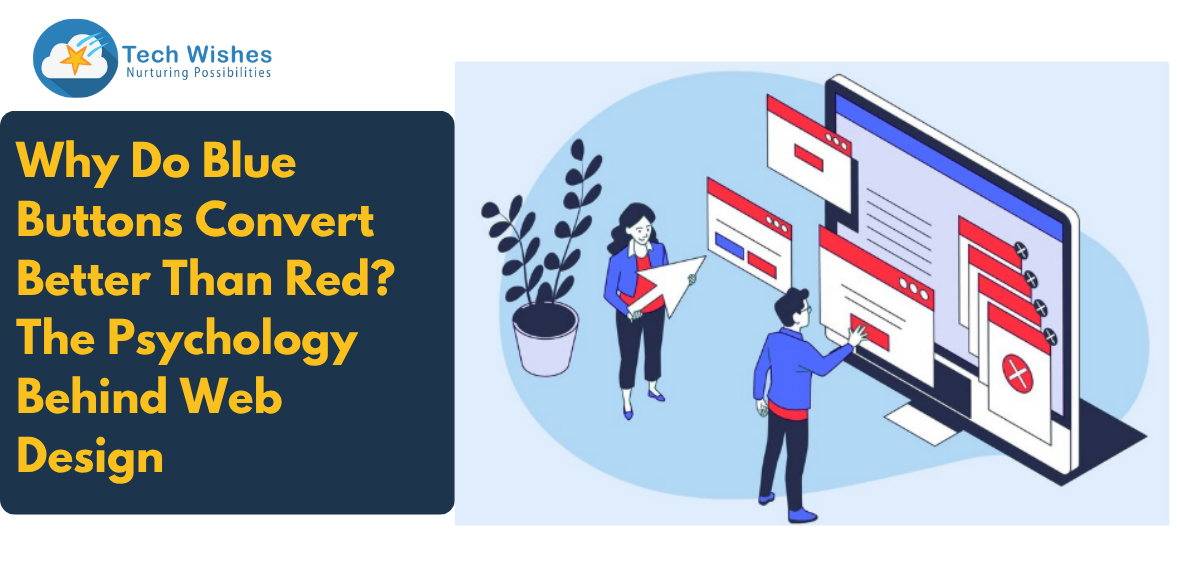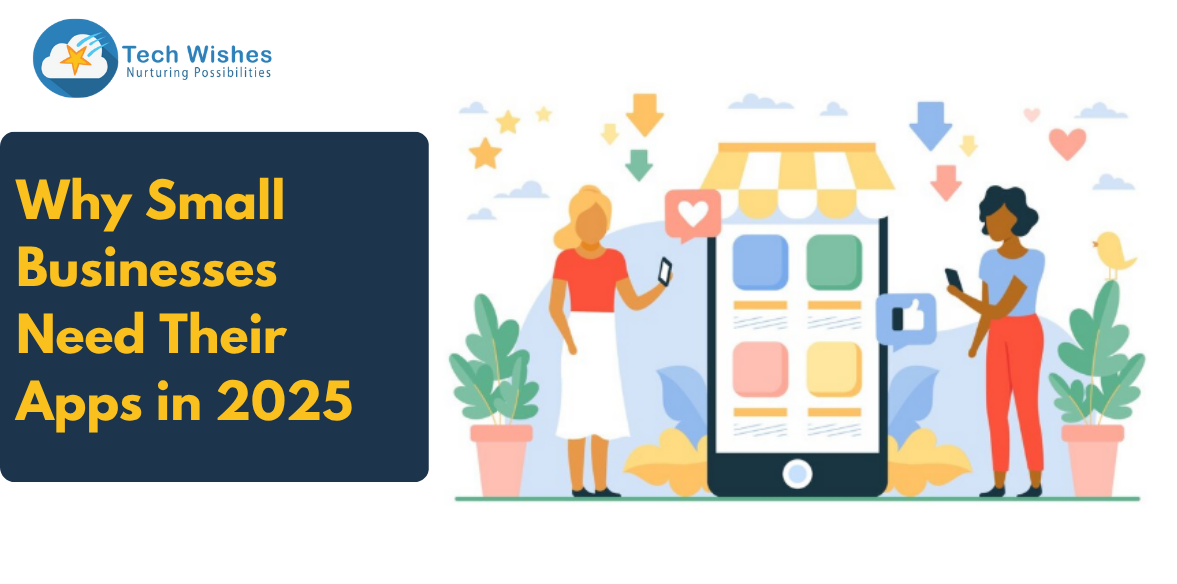In 2025, Artificial Intelligence (AI) is no longer a futuristic buzzword—it’s a present-day powerhouse, actively reshaping industries, including web design. For businesses seeking intuitive, responsive, and personalized digital experiences, AI has emerged as both a tool and a creative collaborator. But how deep does AI go in the web design ecosystem? Is it just another automation tool, or is it changing the very DNA of creativity?
Let’s explore the rising influence of AI in web design, debunk myths, and understand how the best web design companies and website designers are adapting to stay ahead.
How Are Website Designers Leveraging AI in Their Workflow?
AI has become a silent co-designer for many professionals in the industry. According to recent statistics:
- 93% of web designers have used AI-powered tools in some form over the last three months.
- 58% of designers rely on AI to generate images, graphics, and other media elements for websites.
Tools like Adobe Firefly, MidJourney, and AI-integrated design platforms now assist in wireframing, layout suggestions, and even writing website copy. For the best web design companies, this automation translates to reduced turnaround times and consistent creative output.
More importantly, AI is enhancing UX by using behavioral data to personalize content and suggest design changes in real time. A website designed today isn’t just pretty; it’s smart, responsive, and intuitive.
What Are the Common Myths About AI in Web Design?
Despite its growing utility, AI in web design faces skepticism. Here are some common myths:
Myth 1: AI will replace human designers. Reality: AI excels at repetitive tasks but lacks human intuition, empathy, and contextual judgment. AI is a co-creator, not a competitor.
Myth 2: AI-generated designs are generic. Reality: While early AI outputs lacked uniqueness, today’s tools allow detailed customization and brand-specific input. The result? Designs tailored for your audience and brand voice.
Myth 3: AI tools are only for large enterprises. Reality: Most AI web design tools are cloud-based and affordable. Even startups and SMEs can now access the power of AI without a huge budget.
The best web design companies understand that AI is a productivity amplifier, not a replacement for creativity. When used strategically, it complements a designer’s vision.
How Is AI Helping Web Design Companies Deliver More Value?
From web designers to developers, AI is redefining how teams collaborate and deliver. Here’s how:
- Faster Prototyping and Design
AI accelerates the prototyping process by automatically generating templates, layouts, and UX flows. It allows designers to test multiple variations quickly. - Intelligent Personalization
AI analyzes user behavior to customize content, layout, and product recommendations. This boosts engagement and reduces bounce rates. - Enhanced Accessibility
AI tools can automatically suggest alt-text, optimize contrast, and check screen-reader compatibility, making websites more inclusive. - Continuous Optimization
AI continuously monitors site performance and user behavior, offering real-time suggestions to improve UI/UX.
By integrating AI, the best web design companies are not just creating static digital platforms; they are building adaptive, intelligent experiences that evolve with user needs.
How Do Website Designers Adapt to the Rise of AI?
The role of the website designer is evolving. Here’s how designers are staying ahead:
- Learning AI Tools: Designers are upskilling to master tools like Framer AI, Figma plugins, and Webflow’s AI assistants.
- Focusing on Strategy: With AI handling routine tasks, designers are spending more time on strategic thinking and storytelling.
- Enhancing Data Interpretation: Understanding AI-generated insights helps designers make data-driven decisions that improve user experience.
- Experimenting Fearlessly: With AI accelerating A/B testing, designers can rapidly test ideas and iterate faster.
AI is shaping a new kind of designer—one who blends creativity with technical fluency and data-driven decision-making.
Is AI a Tool or a Creative Partner?
AI is more than a tool; it is a creative ally. Here’s why:
- Idea Generation: AI can suggest color palettes, typography, layout combinations, and visual motifs that inspire new design directions.
- Content Creation: AI copywriting tools assist in generating SEO-friendly, engaging content tailored for specific demographics.
- Brand Consistency: AI ensures that designs remain consistent across platforms, even when multiple designers are involved.
This synergy between human creativity and machine precision makes web design more dynamic than ever before.
What Does This Mean for Businesses Looking to Build a Website?
If you’re looking to build a web app or website, choosing a web design company that understands AI is crucial. AI-empowered agencies bring:
- Speed without sacrificing quality
- Innovation with scalability
- User-centric design backed by data
Whether you need a simple landing page or a custom web application development service, AI ensures your digital presence is not just functional but future-ready.
Final Thoughts: Embrace the Evolution
AI is no longer an optional add-on; it’s a competitive advantage. In 2025, the line between tool and creative partner continues to blur. The best web design companies are those that know when to rely on AI and when to lean into human creativity.
For businesses, partnering with a forward-thinking web design company like Tech Wishes ensures you stay ahead of trends, deliver superior user experiences, and scale efficiently.
In the end, the question isn’t whether AI will shape the future of web design—it’s whether you’ll be a part of that future.




